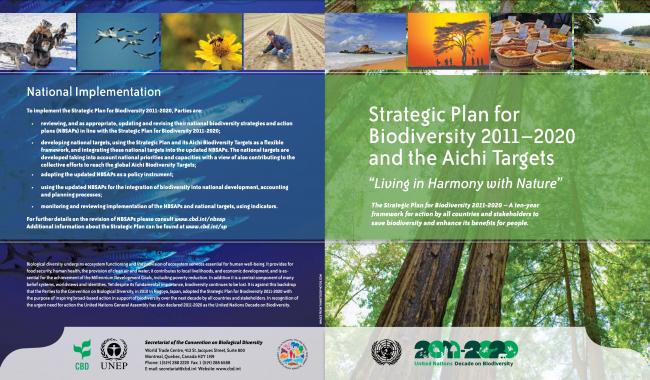Despite considerable efforts over the last decades, biodiversity continues to decline at an unprecedented rate. Taking into account the direct links between the services that biodiversity provides and human wellbeing, humanity stands at a crossroads. Implementation of ambitious policy decisions at national and international levels is crucial for any path to a sustainable future. The Convention on Biological Diversity (CBD) through its Subsidiary Body on Implementation (SBI) reviews progress and strengthens means of implementation for biodiversity conservation. During this week, the CBD is convening an informal, virtual meeting in preparation for the third meeting of the SBI (SBI-3) with an agenda focused on implementation.
SBI Chair Charlotta Sörqvist opened the meeting with a moment of silence in memory of those whose lives have been lost in the COVID-19 pandemic. She stressed the importance of maintaining the momentum and advancing work related to the development of a post-2020 global biodiversity framework (GBF).
Hamdallah Zedan, Egypt, on behalf of the 14th Conference of the Parties (COP-14) Presidency, noted that exchanging views and perspectives during this online session leading to SBI-3 will contribute to the development of an ambitious and transformative post-2020 GBF. He highlighted the importance of resource mobilization to ensure adequate means for implementation.
CBD Executive Secretary Elizabeth Maruma Mrema noted the importance of maintaining the momentum towards COP-15 and the development of the post-2020 GBF. She underscored that more than 1,830 participants representing 130 countries and many organizations are registered for the meeting, noting that she was looking forward to their active participation. She provided an overview of the week’s agenda, highlighting key items and reminding delegates that deliberations will support formal discussions during SBI-3.
In a keynote speech for International Women’s Day, Izabella Mônica Teixeira, Co-Chair, International Resource Panel, underscored the relevance of women’s leadership for achieving the Convention’s objectives. She called for equal access to natural resources and highlighted the importance of natural resource management. She further stressed that the new gender plan of action is an opportunity to address the current inequalities, emphasizing the important role of women and girls in decision making at all levels of biodiversity governance.
Participants addressed progress in the implementation of the Convention and the Strategic Plan for Biodiversity 2011-2020. All delegates welcomed efforts to implement revised National Biodiversity Strategies and Action Plans (NBSAPs); however, many expressed deep concerns regarding the level of ambition in NBSAPs not being collectively commensurate to that set out in the Aichi Biodiversity Targets. Some suggested clearly reflecting each country’s contributions to meeting the global commitments. Many interventions focused on the need for adequate resource mobilization, including financial resources, capacity building, and technology transfer. Several participants also noted concern at the limited progress on Aichi Biodiversity Target 18 (traditional knowledge) as well as a lack of implementation of the Gender Plan of Action.
Some delegates suggested the need to further elaborate on the mechanisms for reporting, assessment, and review of implementation. Many participants noted that further work is needed to fully integrate gender considerations as well as Indigenous Peoples and local communities and traditional knowledge in the implementation of the Convention and in NBSAPs.
Stakeholder groups stressed the importance of ensuring the inclusion of Indigenous Peoples, local communities, women, and youth in the implementation of the Convention across regional and national levels. Participants were also reminded of the need for transformative change across societal structures, called on by the latest Intergovernmental Science-Policy Platform on Biodiversity and Ecosystem Services (IPBES) Global Biodiversity Outlook (GBO). In this regard, some stressed the need for fundamental shifts in resource mobilization and distribution to accommodate the implementation of such changes.







